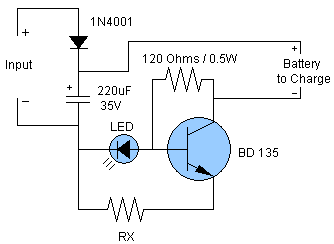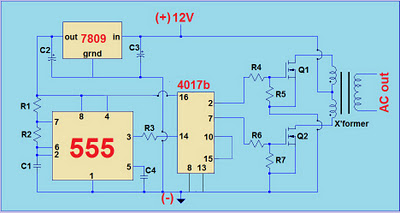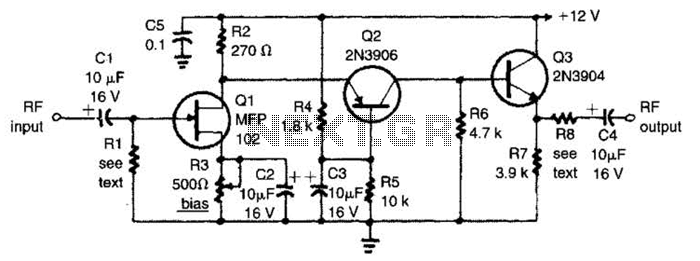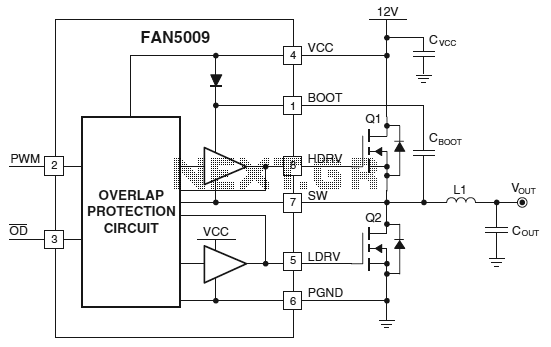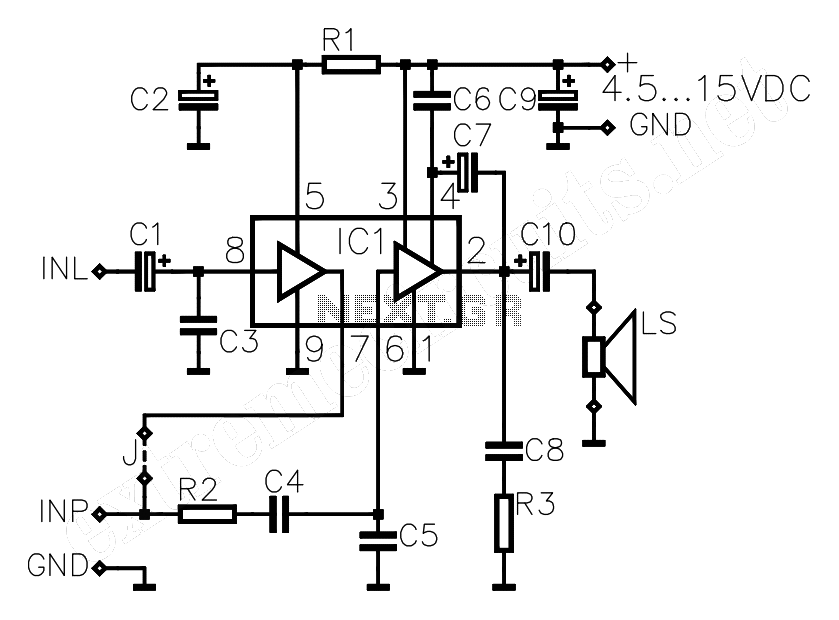
STK4050V audio amplifier circuit
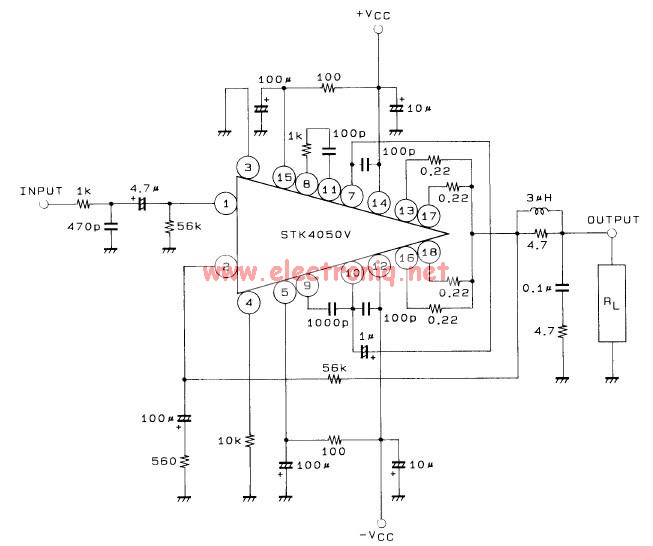
This 200-watt audio amplifier circuit diagram is based on the STK4050V high-power audio amplifier IC, designed to deliver up to 200 watts of audio power on a single channel. The STK4050V 200-watt audio amplifier circuit is pin-compatible with other STK amplifier series. Due to the application of a current mirror circuit, distortion levels are reduced to 0.08%. The STK4050V supports the addition of electronic circuits for thermal shutdown and load-short protection, as well as pop noise muting, which occurs when the power supply switch is turned on and off. The maximum output power of the STK4050V audio amplifier is approximately 200 watts with an 8-ohm load impedance when using a 66-volt split power supply. To construct this power amplifier, it is essential to implement separate thermal protection and load short protection circuits, as the IC does not provide these protections inherently, which could lead to damage to the chip and the speaker enclosure. Furthermore, when configured in bridge mode using two ICs, a 400-watt high-power amplifier can be achieved; however, this setup will require a high-power transformer for the power supply.
The STK4050V audio amplifier circuit is engineered for high-performance audio applications, suitable for driving large speakers in professional audio systems or high-fidelity home setups. The circuit operates efficiently, utilizing a split power supply to maximize the output capabilities while maintaining low distortion. The inclusion of a current mirror circuit not only enhances the linearity of the amplifier but also contributes to the overall sound quality by minimizing harmonic distortion.
When implementing thermal protection, a thermistor or a dedicated thermal cutoff switch can be integrated into the circuit to monitor the temperature of the amplifier. If the temperature exceeds a predefined threshold, the protection circuit will disconnect the power supply, preventing potential damage. Similarly, the load-short protection circuit can be designed using a relay that disconnects the output when a short circuit is detected, safeguarding both the amplifier and the connected speakers.
In bridge mode configuration, the two STK4050V ICs must be carefully arranged to ensure proper phase alignment and load sharing. This configuration effectively doubles the output power, allowing for greater sound levels and improved performance in demanding audio environments. A robust power supply transformer is crucial for this setup, as it must provide sufficient current and voltage to meet the increased power requirements without introducing noise or instability into the system.
Overall, the STK4050V audio amplifier circuit represents a versatile solution for high-power audio amplification, with essential features that enhance reliability and performance in various applications.This 200 watt audio amplifier circuit diagram is based on STK4050V high power audio amplifier IC and is designed do deliver up to 200 watts audio power on a single channel . STK4050V 200 watt audio amplifier circuit is pin compatibility with other STK amplifiers series . Because of current mirror circuit application the distortions are reduced to 0.08 % . STK4050V supports addition of electronic circuits for thermal shutdown and load-short protection circuit as well as pop noise muting which occurs when the power supply switch is turned on and off.
The maximum output power of STK4050V audio amplifier is around 200 watts on 8 ohms load impedance with a 66 volts split power supply . If you want to make this power amplifier you need to make a separate thermal protection and load short protection circuit because the IC don’t offer these kind of protection and you can destroy the chip and the speaker box .
Also if you connect the circuit in bridge mode configuration, using two ICs you can make a 400 watt high power amplifier, but you'll need a very high power transformer for power supply. 🔗 External reference
The STK4050V audio amplifier circuit is engineered for high-performance audio applications, suitable for driving large speakers in professional audio systems or high-fidelity home setups. The circuit operates efficiently, utilizing a split power supply to maximize the output capabilities while maintaining low distortion. The inclusion of a current mirror circuit not only enhances the linearity of the amplifier but also contributes to the overall sound quality by minimizing harmonic distortion.
When implementing thermal protection, a thermistor or a dedicated thermal cutoff switch can be integrated into the circuit to monitor the temperature of the amplifier. If the temperature exceeds a predefined threshold, the protection circuit will disconnect the power supply, preventing potential damage. Similarly, the load-short protection circuit can be designed using a relay that disconnects the output when a short circuit is detected, safeguarding both the amplifier and the connected speakers.
In bridge mode configuration, the two STK4050V ICs must be carefully arranged to ensure proper phase alignment and load sharing. This configuration effectively doubles the output power, allowing for greater sound levels and improved performance in demanding audio environments. A robust power supply transformer is crucial for this setup, as it must provide sufficient current and voltage to meet the increased power requirements without introducing noise or instability into the system.
Overall, the STK4050V audio amplifier circuit represents a versatile solution for high-power audio amplification, with essential features that enhance reliability and performance in various applications.This 200 watt audio amplifier circuit diagram is based on STK4050V high power audio amplifier IC and is designed do deliver up to 200 watts audio power on a single channel . STK4050V 200 watt audio amplifier circuit is pin compatibility with other STK amplifiers series . Because of current mirror circuit application the distortions are reduced to 0.08 % . STK4050V supports addition of electronic circuits for thermal shutdown and load-short protection circuit as well as pop noise muting which occurs when the power supply switch is turned on and off.
The maximum output power of STK4050V audio amplifier is around 200 watts on 8 ohms load impedance with a 66 volts split power supply . If you want to make this power amplifier you need to make a separate thermal protection and load short protection circuit because the IC don’t offer these kind of protection and you can destroy the chip and the speaker box .
Also if you connect the circuit in bridge mode configuration, using two ICs you can make a 400 watt high power amplifier, but you'll need a very high power transformer for power supply. 🔗 External reference
